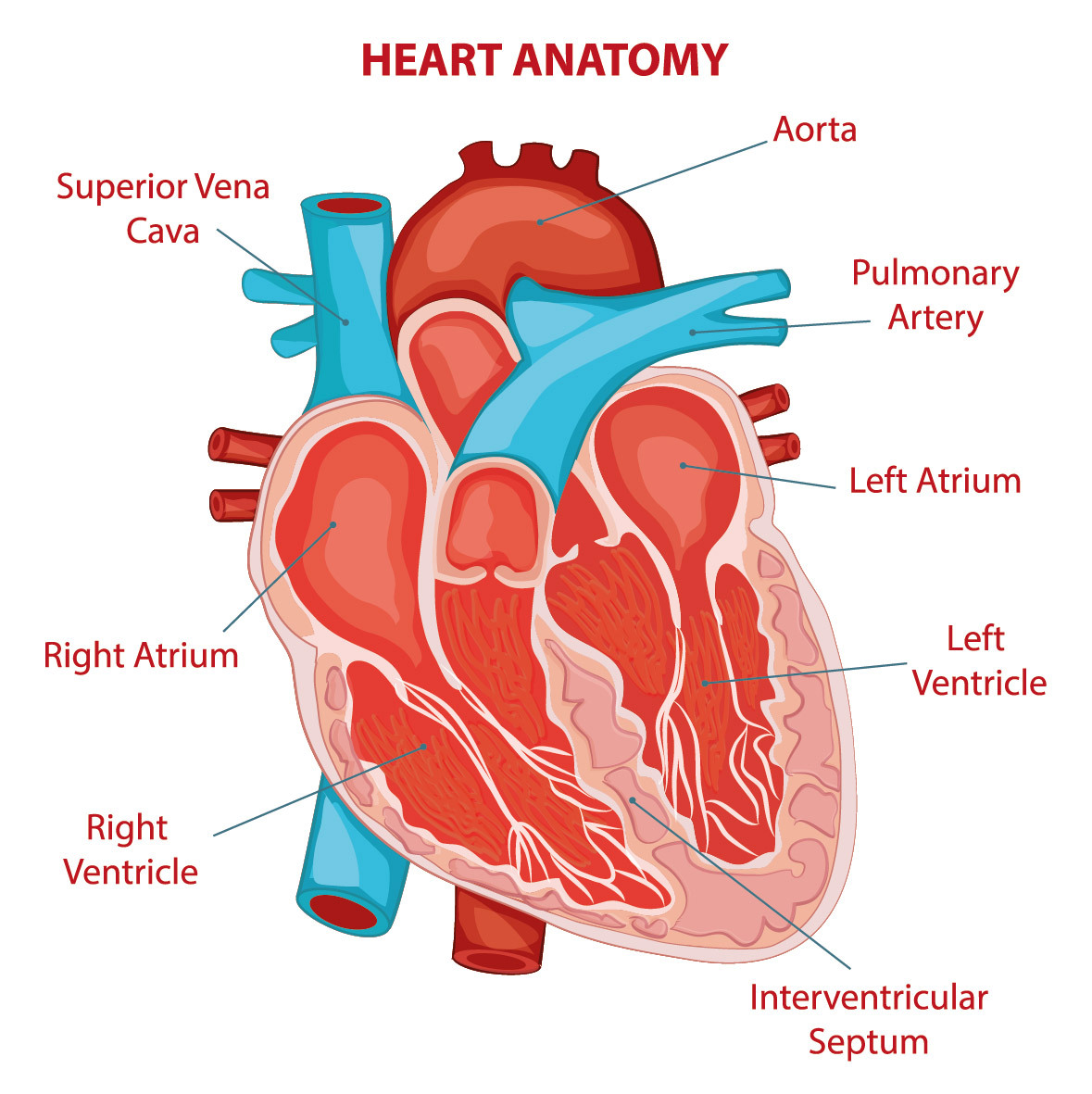As we get older, our maximum heart rate (MHR) goes down. This is shown by the following equation: 220 – age = maximum heart rate (MHR).
Q.What is the cause of this? Why does this happen and what exactly is changing with the aging heart?
A.The decrease in maximum heart rate which occurs with aging is a non-modifiable and inevitable consequence of aging. It affects men and women equally. The decrease in maximal heart rate is the biggest factor in why maximal cardiac output also decreases as we age.
We know there are two reasons why maximal heart rate decreases as we age:
The first reason, which is responsible for about 75-80% of the drop in maximal heart rate is due to a decrease in the heart’s “intrinsic heart rate”. This means that the heart’s own pacemaker (which is actually a cluster of special cells located in a specific area on the right side of the heart) begin to wear down. These electrical generator cells that are responsible for initiating each heart beat lose their functional efficiency at a cellular level. This is similar to an older car battery losing some of its charge. Currently, we have not determined the exact cellular mechanism for this change and therefore, there is no treatment.
The second and less important reason for the decrease in maximal heart rate with aging is a decrease in the heart’s sensitivity to the hormone secreted from our adrenal glands called adrenaline or epinephrine. Exercise normally stimulates the secretion of this hormone yet, as we age, our heart rate is less responsive to the same blood concentrations of epinephrine. The exact reason for this is not known. This decrease in epinephrine responsiveness is believed to account for about 20% of the decrease in maximal heart rate with aging. And, while there is no epinephrine pill, there are “stimulants” that can further increase epinephrine secretion, but at the risk of causing severe elevations in blood pressure and dangerously irregular heartbeats.
Q.When athletes get older they slow down. Their muscles seem to wither, little by little. Does the heart, which is also considered a muscle get smaller over time as well?
A.While it is true that as we age, our skeletal muscles usually shrink or atrophy, this phenomenon is primarily caused by decreases in hormone levels and the intensity of our exercise. To a certain degree, these changes can be slowed or partially reversed by taking exogenous hormones and training hard with weights and in other ways (core, running, swimming, etc).
The heart though is NOT made of skeletal muscle, and therefore does not shrink with aging. The heart consists of an entirely different kind of muscle which is unique to the organ. However, the heart does change with age.
This change however is not one that is easily seen with the naked eye. Yes, the blood vessels of the heart may develop calcium deposits which sometimes can be seen on the outer surface of the heart or felt with the finger. However, the most significant changes cannot be seen. The changes of the heart that are most common are changes in the elastic properties of the heart muscle and the chambers created by that muscle.
The walls of the heart become stiffer with age, and diseases like hypertension, heart attacks and other less common problems all contribute to this change in stiffness or compliance. We believe there are several mechanisms for this change in muscle compliance and certain drugs when used over years in patients with hypertension and heart disease can reduce and partially reverse the development of this acquired muscle stiffness.
This change in muscle chamber compliance (or stiffness) that occurs with aging is quite variable between individuals and may have a genetic component. If one does not have diseases like hypertension, diabetes, or prior heart attacks, many people develop only mild changes. Intensive aerobic exercise has been shown to mitigate a lot of these changes or at least slow their progression. Exercise also dilates the arteries throughout the body, making it easier for the heart to eject out its blood with each beat therefore indirectly assisting the body’s circulation.
Q.What’s the major physical difference between an old and a young heart?
A.There are a number of differences between the young and old heart. Most older hearts do have some accumulation of cholesterol and/or calcium in the walls of its arteries. Of course, the degree of this build up is quite variable and depends on many factors. Also, as the heart ages, it acquires a “coat” of fat over its exterior surface that in general mirrors the percent body fat of the heart’s owner. This usually has no effect on the heart’s mechanical function.
The major difference in the older heart, which cannot be seen with the naked eye, is the character of the walls of the heart chambers. Often the walls become thicker, stiffer and less supple, usually made worse by high blood pressure, diabetes and a variety of other disease
Q.Is there an age limit for heart donors? In other words is there demand for the heart of an old (let’s say 60) person to be transplanted into a young body? Would an old heart in a young body adapt to the same Maximum Heart Rate that other young people of similar age ha
A.The characteristics of a donor heart have been intensively studied. The ideal donor for heart transplantation is under the age of 30, has never been exposed to tobacco or other health risks and the mode of death is usually head trauma or bleeding brain aneurysm. However, the ideal donor is rare. Over the past 30 years, older donor hearts have been accepted primarily because the technology to evaluate the entire donor’s medical condition has improved. While there is no age limit to donate a heart, it is very unusual to accept a donor heart that is over 60 years old. We occasionally pair an older heart recipient (>60 years old) with a donor that is less ideal, and this could mean an older heart, but, the selection process is not based solely or even mostly on the age of the donor.
Our knowledge that maximal heart rate goes down with increasing age counts little in the selection process of a donor heart for transplantation. The reason for this is that when the donor heart is removed and transplanted, all of the nerves that help control heart rate in the living donor are surgically severed when the heart is removed from the donor. When the recipient’s own failing heart is removed, all of its nerves are severed as well. The end result is that the newly transplanted heart has NO nerve attachments to help it control heart rate and therefore it is solely dependent on circulating blood adrenaline levels to raise heart rate. What results is a transplanted heart that initially cannot dramatically increase its heart rate. Once the patient recovers, studies show that the normal response of increased heart rate with vigorous activity is still impaired. While the transplanted heart does eventually adapt by increasing its heart rate with exercise, the response is always blunted and the nerves usually do not grow back into the donor heart. Still, the heart transplant patient does surprisingly well.
Q.Is there anything we can do to maintain our Maximum Heart Rate?
A.There is nothing specific we can do to prevent our maximum heart rate from falling as we age. However, most masters runners find that they are routinely at or exceed their predicted maximum heart rate during a hard workout or race. It seems that with training and fitness, we may be able to slow this inevitable process just a bit.




